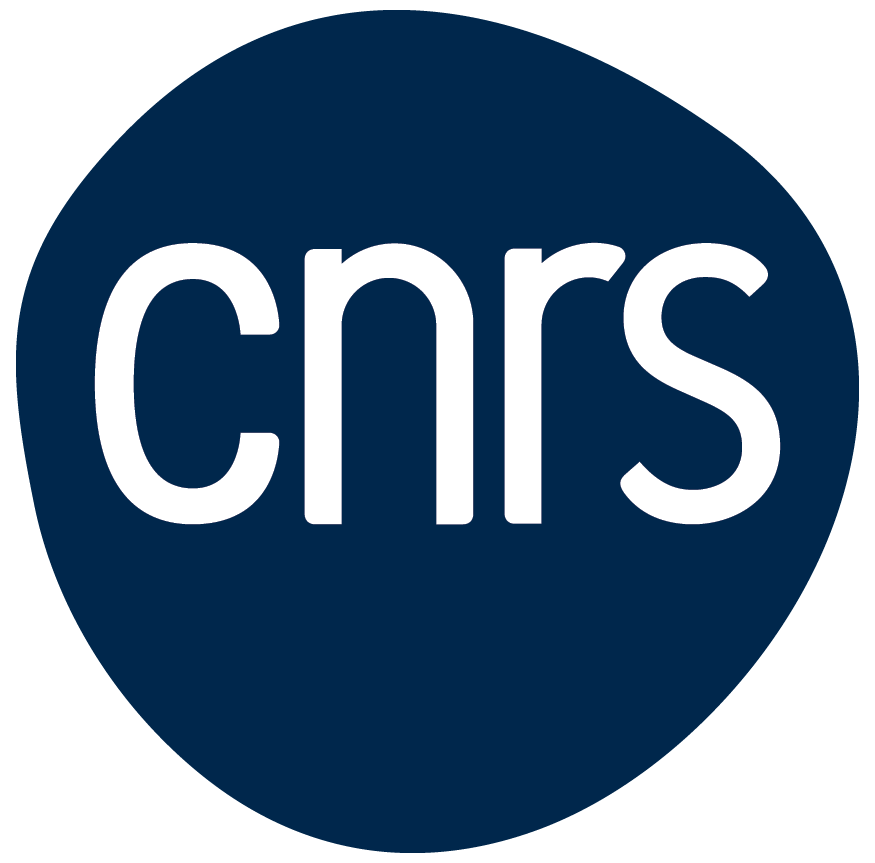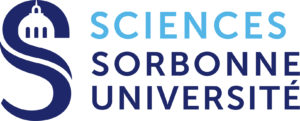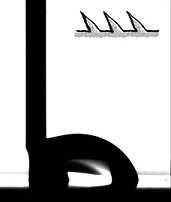 Here is a flat surface on which drops always go in the same direction. Instead of spreading evenly they spread only in one and the same direction... In the picture on the left, they can only spread to the right, not to the left (click here to see it on a movie).
Here is a flat surface on which drops always go in the same direction. Instead of spreading evenly they spread only in one and the same direction... In the picture on the left, they can only spread to the right, not to the left (click here to see it on a movie).
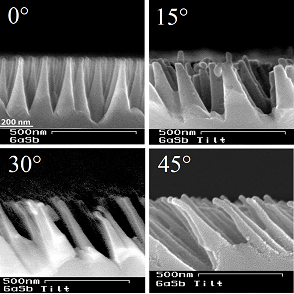
How do we achieve this ?
By covering the surface with tiny conical features : submicrometric cones, which are all tilted in a specific direction. On the cross sections on the right, we can see cones with different inclination angles. They are so small that they barely affect the visual aspect of the surface but they create a challenge for the spreading liquid molecules.
Studying these very special surfaces, we found that cone inclination strongly affects the wetting properties. Moreover, we came across a puzzling observation : we found that drops move opposite to the direction the features point to. Not quite like cat petting !
The simplest model...
To explain these very specific and rather clear-cut wetting properties, we checked them against the standard theories of wetting. We found that the simpler theories are unable to model such an extreme case. We had to perform more precise 3-dimensional calculations of how a moving liquid can handle these tilted obstacles. In fact this is a fairly complex calculation, but the results seem to make sense of the experiments.
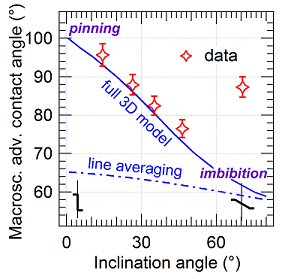 Moreover, the results provide a clearer picture of how wetting proceeds on such contorted surfaces. In a nutshell, imagine the drop edge wetting the solid, held back by the surface features. For the liquid to move, it must break free from the hold of each small tip : this is in fact easier if the tip leans acutely against the liquid surface rather than along the surface... Water takes it the rough way, and wetting proceeds against the nap.
Moreover, the results provide a clearer picture of how wetting proceeds on such contorted surfaces. In a nutshell, imagine the drop edge wetting the solid, held back by the surface features. For the liquid to move, it must break free from the hold of each small tip : this is in fact easier if the tip leans acutely against the liquid surface rather than along the surface... Water takes it the rough way, and wetting proceeds against the nap.
And in practice ?
Well, these surfaces have at least one serious drawback : the drops can spread in one direction, but they can’t really move. The structures are so small and with such a high aspect ratio that the other side of the drop cannot follow : it is completely pinned. Well, in fact, there is also a second drawback : they are exceedingly difficult to fabricate...
Publication
- Elise Contraires, Jérémie Teisseire, Elin Søndergård and Etienne Barthel, Soft Matter 12, 6067-6072 (2016) - Journal Page, [Hal]
